Day Six: Wine Country Awaits
The morning of day six we were still in Lagos and today we had set to go on a wine tasting tour.
My sister did some diligent research before we left and found a cool company called South Explorers (https://southexplorers.pt/), and booked us on their Silves and Monchique wine tasting tour (https://southexplorers.pt/silves-monchique-wine-tasting/). They agreed to pick us up at the front door of our hotel, which was great given all the many days of walking we had before along the Fisherman's trail and yesterday's excitement with feet pain and blisters.
We again woke up really early around 6 AM, headed upstairs to the dining room café at Lagos Dream B&B and made a nice cup of coffee where we sat and talked about the upcoming day. Went back downstairs, took a shower in these weird double showers – not at the same time because we're siblings, of course – and then I got myself dressed and put on the comfy sandals I got the day before. We headed upstairs for 9 AM to meet our driver.

Meeting Filipe: The Caffeinated Storyteller
When the van pulled up, a wiry-looking gentleman stepped out with the kind of energy that suggested he'd mainlined espresso before starting his workday. This was Filipe Simão, our guide for the day. He greeted us with genuine enthusiasm – not the forced tour guide variety, but the real deal. Someone who actually loved what he did and wanted to share it.
We were his first pickup of the day. My sister and I climbed into the van, and I could already tell this wouldn't be your typical point-and-drone tour. Filipe had stories bubbling up, ready to spill out at the slightest provocation. When we asked him questions about the day ahead, he had to physically rein himself in. "I'll tell you everything during the tour," he said with a grin. "Otherwise I'll spoil all the good parts."
Over the next half hour, we drove around Lagos collecting the rest of our tour group. Six more people piled in, bringing our total to eight guests plus Filipe. The seating arrangement sorted itself out organically – my sister and I ended up in the middle row, three people behind us, three in front. A gentleman named Chris took the seat to my right. This would be our formation for the day.
Those first few stops were like a clown car routine. People stumbling over each other, confused about who exits first, seatbelts getting tangled. But by day's end, we'd transformed into a well-oiled machine. Military precision getting in and out of that van. Funny how quickly groups adapt when they're forced to work together.
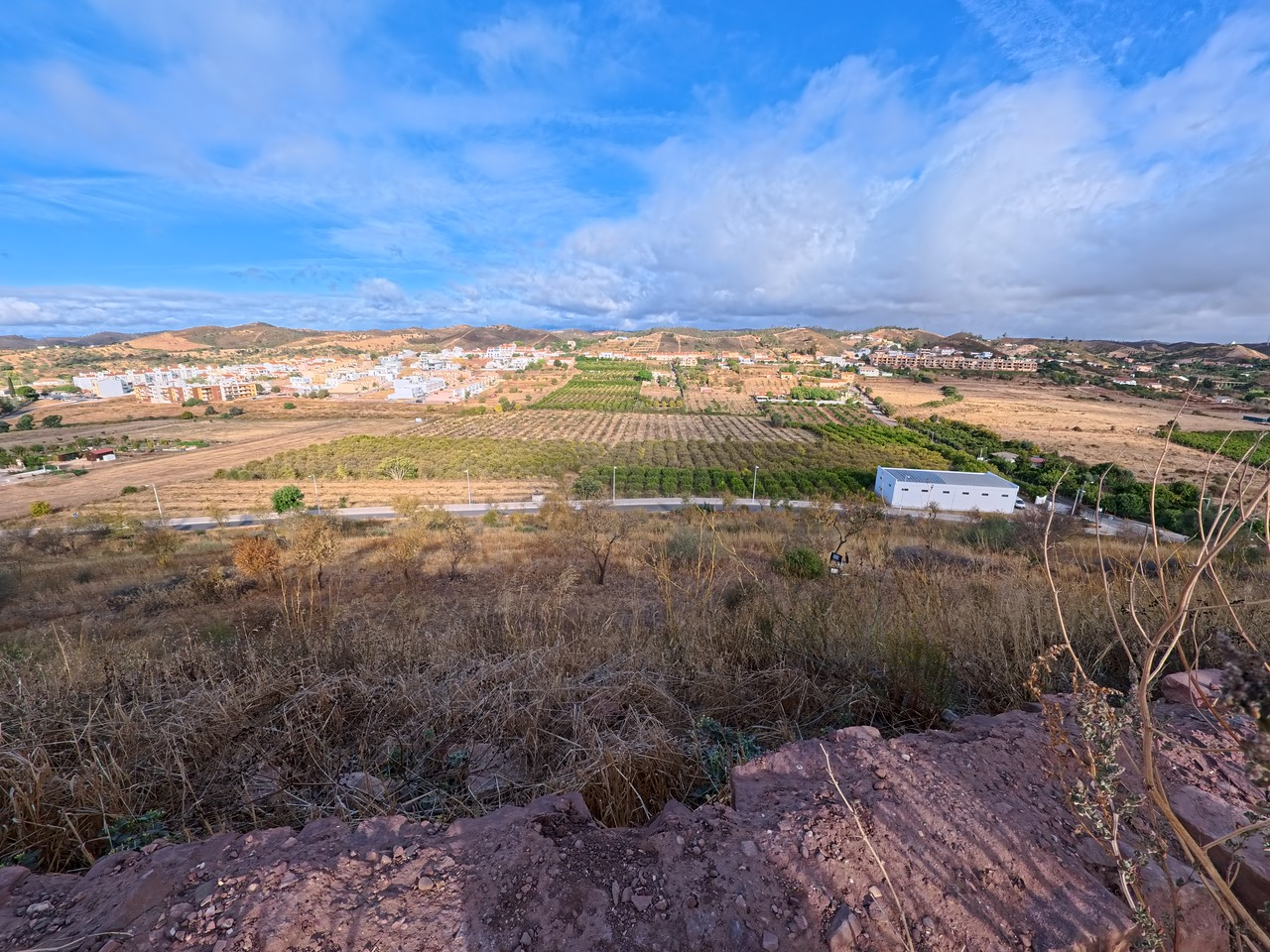
The Living Encyclopedia of Portuguese Nature
Once we cleared Lagos and hit the open road, Filipe unleashed the knowledge he'd been holding back. This guy wasn't just a tour guide – he was a walking encyclopedia of Portuguese history, ecology, and culture, all wrapped up in a personality that made learning feel like hanging out with your smartest friend.
He pointed out orange trees lining the road and dropped this gem: Portugal's involvement with oranges started when they brought them from China. The Portuguese adapted them to their coastal climate, creating sweeter varieties that eventually spread worldwide. The oranges we know today? Portugal had a hand in that evolution.
Then avocados. Different fruits. Trees I'd never heard of. He talked about Portugal's microclimates with the kind of detail that only comes from actually paying attention to your environment. The Algarve region sits at this intersection where Atlantic and African coastal breezes meet, where the Atlantic Ocean and Mediterranean influences collide. Even within Lagos and surrounding areas, you get completely different microclimates from one hillside to the next.
Different soils, different dirt compositions, different plants thriving in valleys that were separated by maybe a kilometer. I'd seen this firsthand during our coastal hike – each day brought different terrain, different vegetation, different challenges. But hearing Filipe explain the why behind what we'd experienced added layers of understanding I hadn't expected.
Sitting here now, writing this, I remember just fragments of the knowledge Filipe dropped on us that day. He spoke for hours, weaving together history, ecology, and culture into narratives that made Portugal feel more alive than any guidebook ever could.
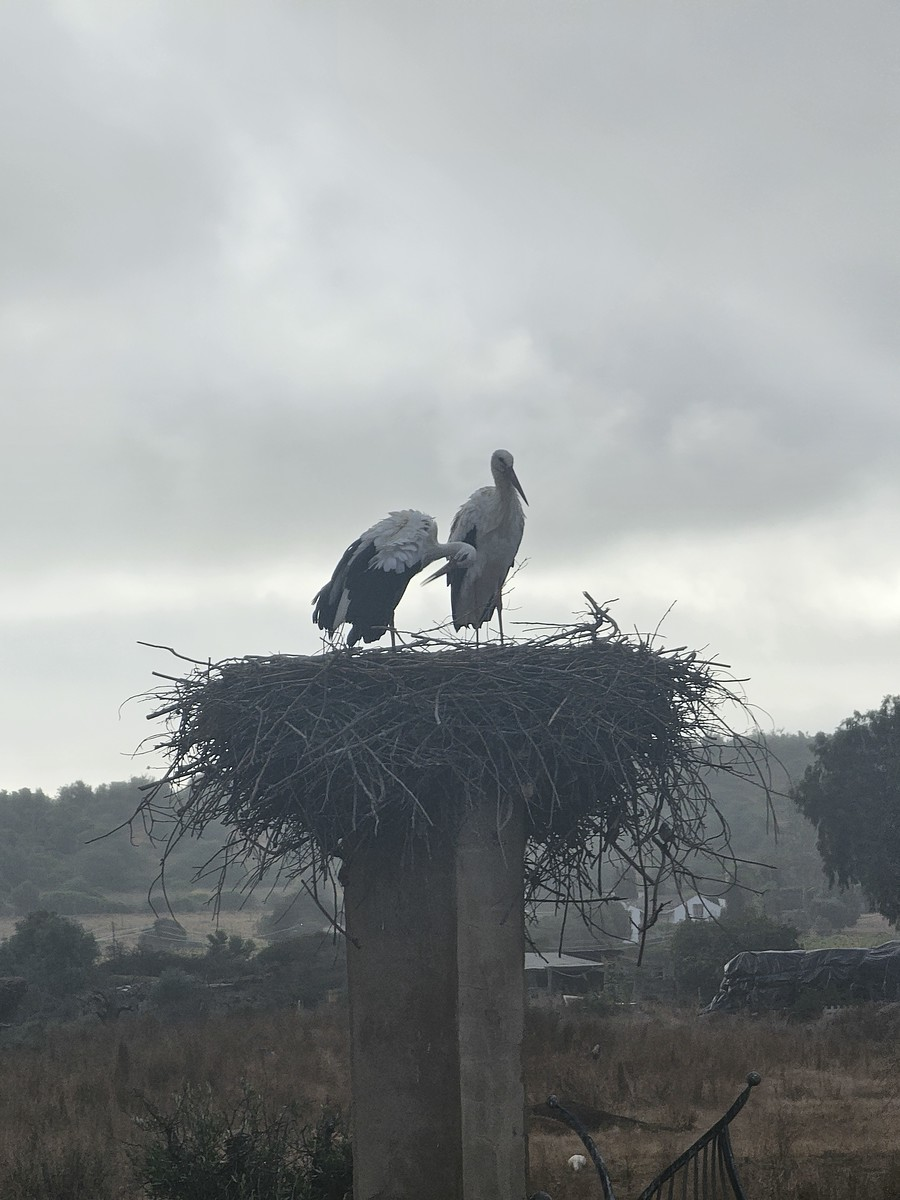
The Coastal Tourism Reality Check
As we drove inland, Filipe shifted gears to talk about modern Portugal's challenges. The coastline had transformed into tourism territory, he explained. Property values shot up. Locals who'd lived there for generations couldn't afford it anymore, so they moved inland. He was taking us to his city – Silves – to show us where real Portuguese life happened now.
This wasn't tourist board propaganda. This was someone who lived the reality of watching his country change, for better and worse. Tourism brings money, infrastructure, jobs. It also prices out locals, changes culture, turns authentic places into performance spaces for visitors. That tension runs through every popular destination worldwide, but hearing it from someone directly affected hit different.

Silves Castle: Red Stone and Deep History
Our first stop was Silves Castle, and this is where the van evacuation dance began its awkward first iteration. Eight people trying to exit in some kind of logical order, everyone being too polite, creating a bottleneck. We eventually stumbled out onto the street.
Filipe herded us to the edge of a cliffside overlook. Below us spread a valley, and he pointed out how the winds moved through it, how the geography shaped settlement patterns, how military considerations influenced where buildings went up centuries ago. Then we walked along the cliff edge while he traced the architectural history visible in the stones around us.

Different conquerors left different marks on Portugal. Different building styles, different materials, different trees planted by different rulers. Silves Castle represented layers of that history – Moorish foundations, Christian reconstructions, centuries of adaptations. The red granite stones gave the structure a distinctive look that felt both imposing and somehow warm.
Filipe brought us to the castle's front gate and gave us about half an hour to forty-five minutes to explore on our own. "Look around, take your time," he said. "I'll meet you back here."

The castle interior was remarkable. Those red granite walls, thick enough to withstand sieges, still standing strong after centuries. The giant cistern they'd built to collect and store water impressed me most – the engineering required to keep a castle supplied during long sieges, the foresight to build infrastructure that would last this long. I'm normally skeptical of pre-arranged tours, preferring to explore independently, but sometimes having someone point you toward specific things makes you see details you'd have missed.
The other benefit of group tours? Those little breaks where you get to talk with other travelers. Chris and Olivia, a couple from Canada we'd been sharing the van with, struck up conversation about the cistern's construction. Chris worked in finance, Olivia was a nurse, and they were exploring Portugal during their vacation time. Regular people, like us, who'd decided Portugal was worth the flight.
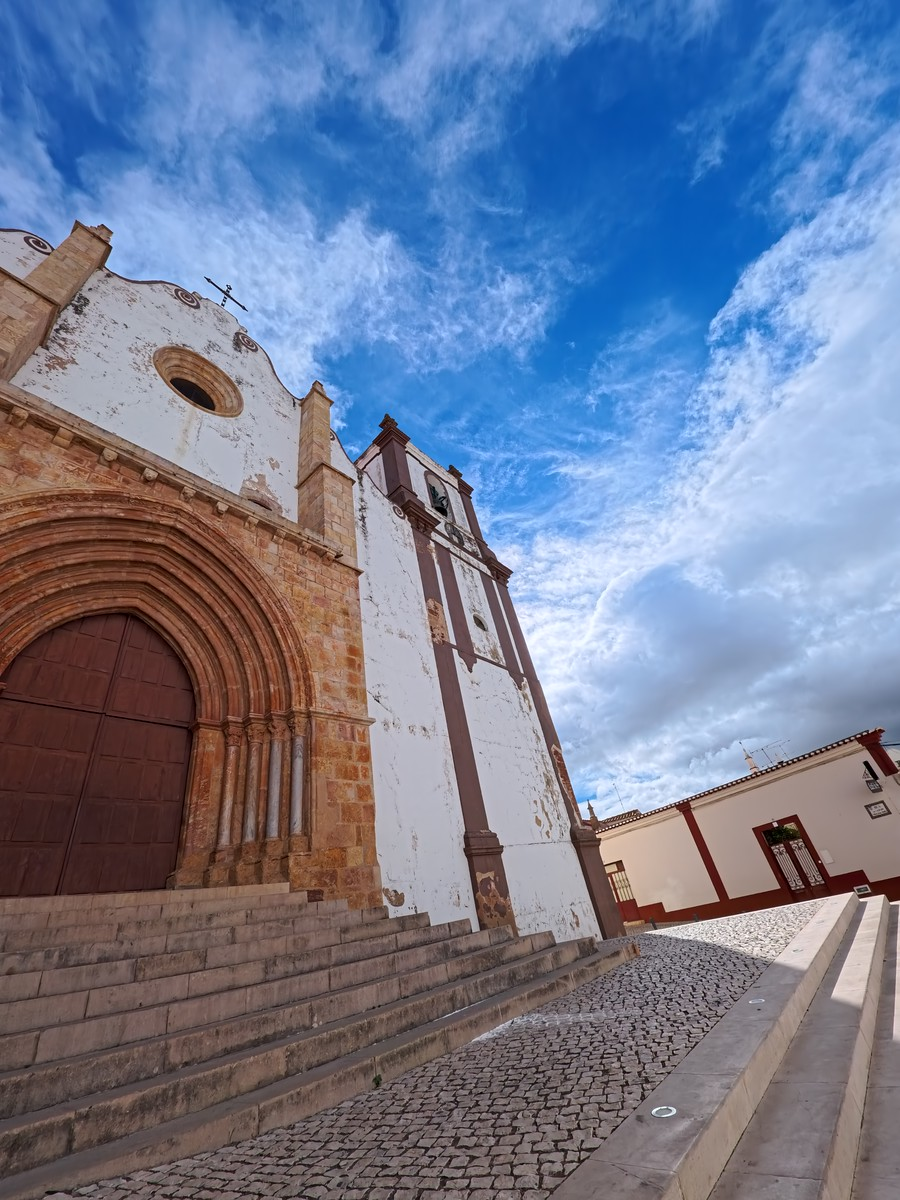
Churches Built on Mosques: Remembering What Came Before
After the castle, Filipe walked us down the road to a church. The ladies in our group had to wrap shawls around their knees before entering – still a functional church, still maintaining traditional standards. All hats came off. I'm not religious anymore, haven't been for years, but I appreciate the architecture, the artwork, the symbolism behind everything religious buildings contain.
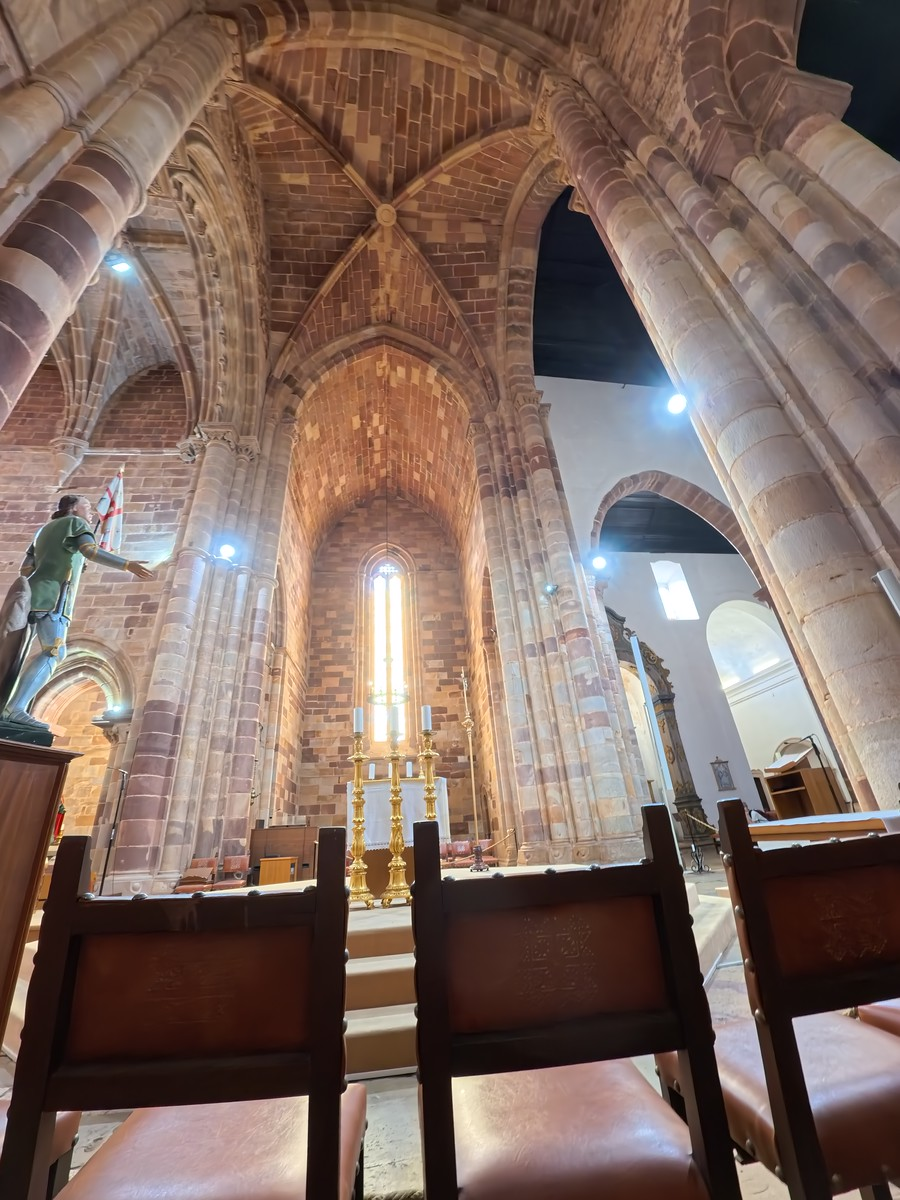
This particular church sat on top of an old mosque that had been torn down during Christian reconquest. But they'd left stones from the original mosque visible in the floor – a deliberate reminder of what came before. Don't forget your past, even when it's uncomfortable. Even when it represents conflict and conquest. That kind of historical honesty felt rare and worth noting.
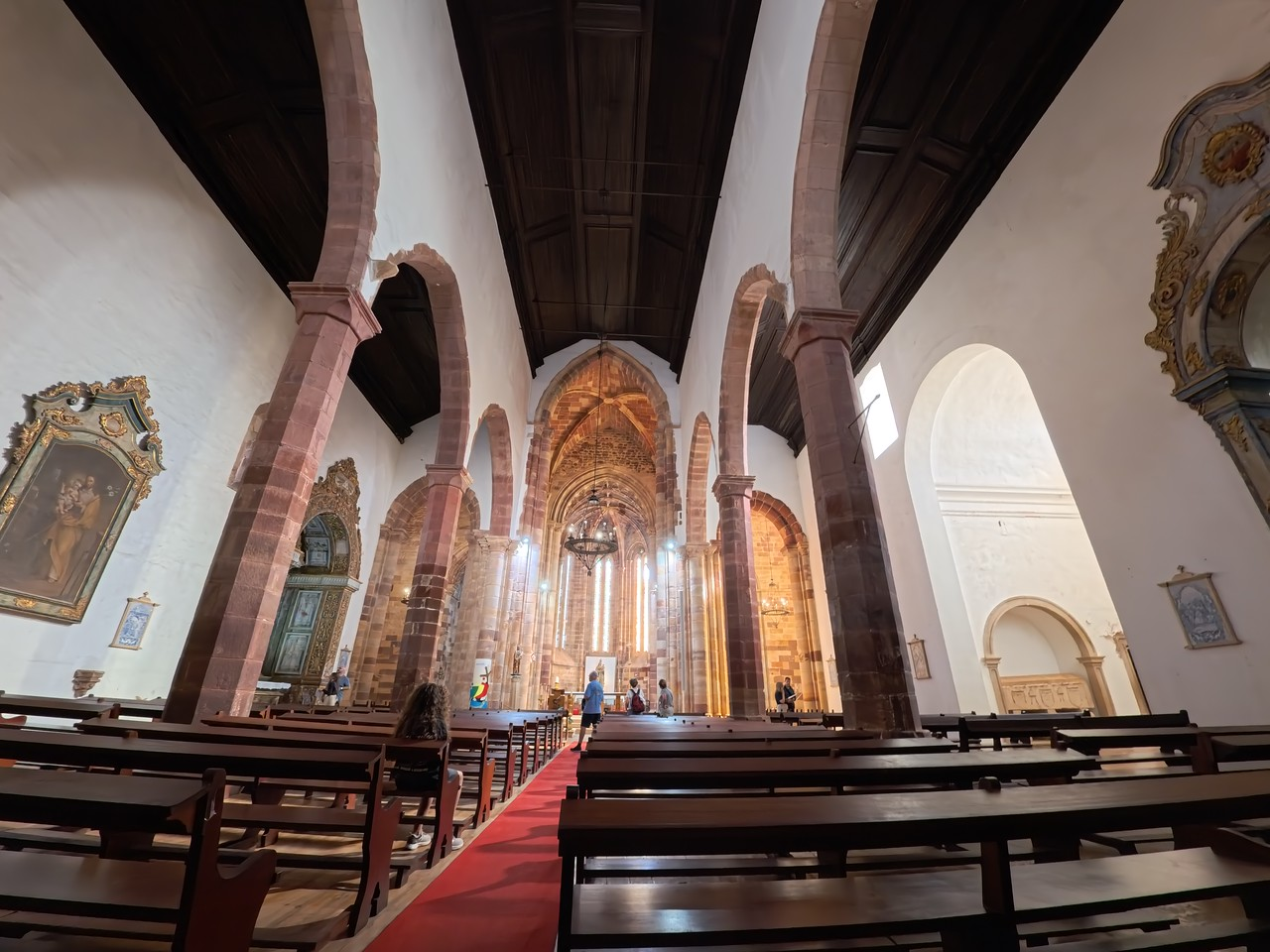
The church interior had all the old world charm you'd expect. High ceilings, religious artwork accumulated over centuries, that particular smell of old stone and incense that seems universal to European churches. We spent maybe fifteen minutes inside before Filipe told us he had to wait for some other logistics and we should walk straight down the hill to the old Roman or Arab bridge at the bottom of town. He'd meet us there with the van.
Navigation and Storks: Portugal's Protected Baby-Bringers
Walking through Silves on our own gave us a chance to see the city without narration. Narrow streets, traditional architecture, locals going about their daily business while tourists like us wandered through taking photos. We almost got lost once – these old Portuguese towns don't believe in obvious signage – but eventually found our way down the hill to the bridge where Filipe waited with the van running.

Back on the road, he pointed out storks. Not just any birds – the legendary baby-bringing storks from children's stories. They're protected in Portugal, he explained. If a stork builds a nest on your roof, in your chimney, in your trees, you're legally required to let them stay. You can't move them. You can't kick them out.
Storks mate for life and return to the same nest year after year. Filipe pulled over near some orange trees where storks had established residence. "Those orange trees are probably going to die," he said matter-of-factly. "Storks live a long time, come back every year, and the trees can't handle the weight and constant occupation. But that's the trade-off."
Seeing them up close in the wild was genuinely cool. Big birds, impressive nests, completely comfortable around humans. No babies with them that day, just adult storks surveying their territory like homeowners checking the property line.
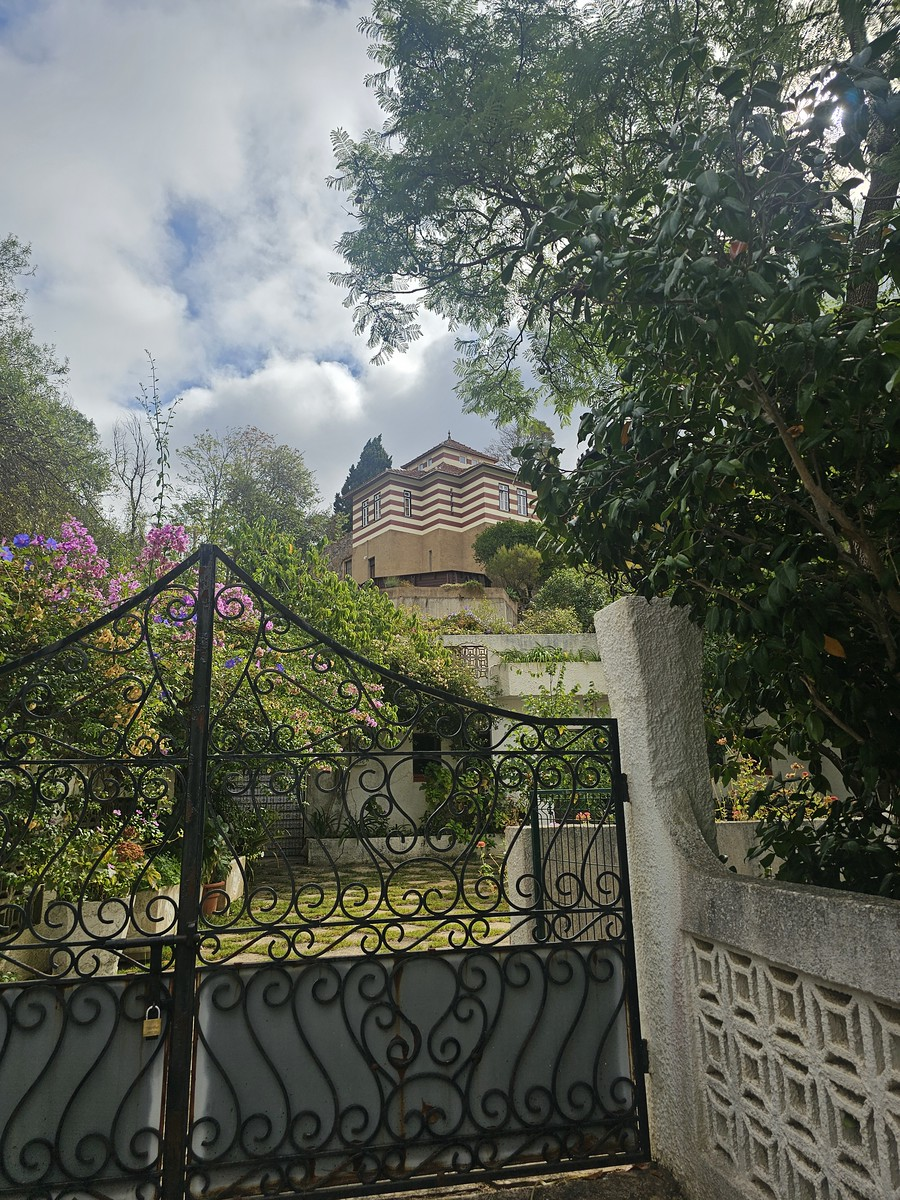
Monchique Springs: Where Princesses Came to Heal
Our next stop brought us to the Monchique Springs, famous for mineral water that supposedly cures ailments and restores health. Filipe had stories about this place too – of course he did. He told us about a princess who had a castle built near the springs because she felt sick anytime she left the area. Only when she stayed there, bathing in the waters and drinking them daily, did she feel healthy.

Whether you believe in healing waters or not, the area was beautiful. They're currently renovating and restoring the spring facilities as tourism money flows into the region. That double-edged sword Filipe had mentioned earlier – tourism brings investment to preserve historical sites, but it also drives up prices and pushes out locals who've lived there for generations.
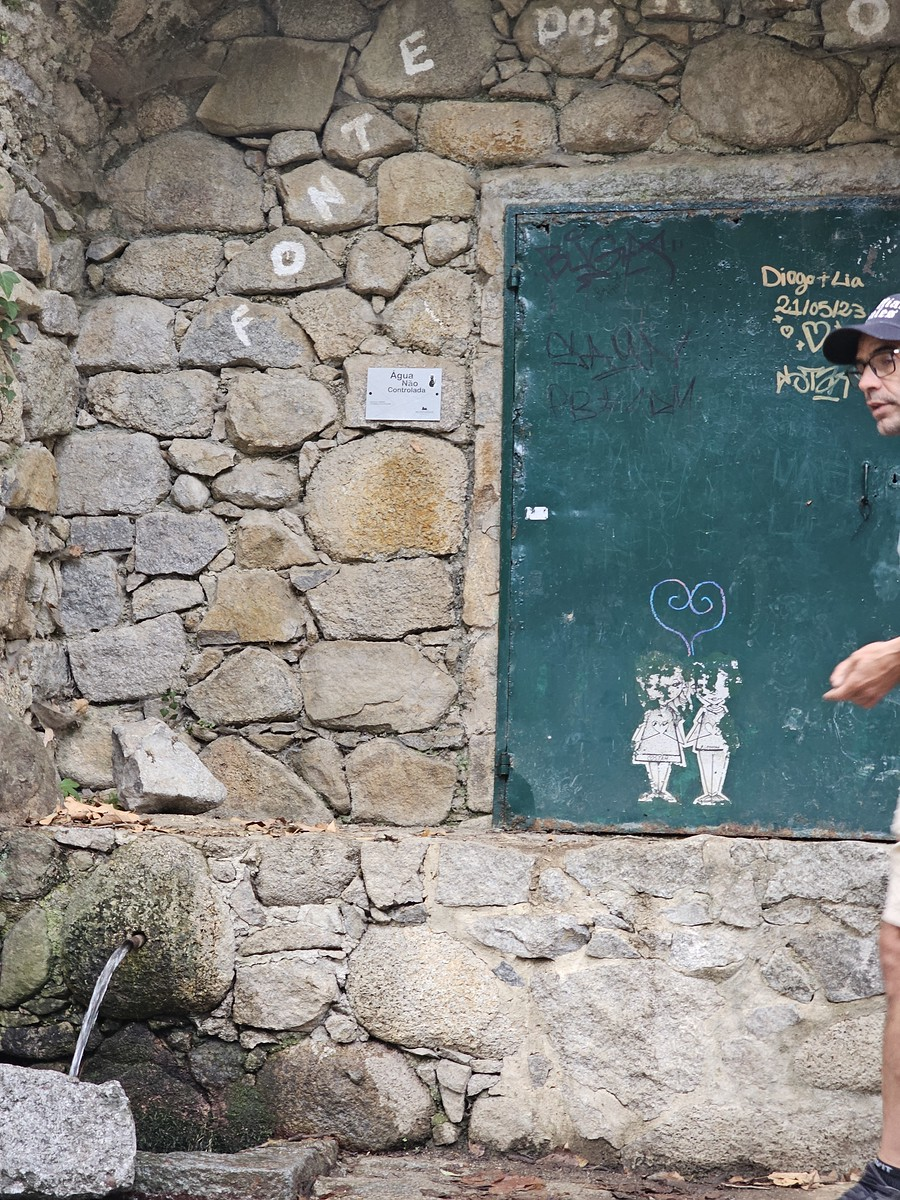
Filipe showed us where we could fill our water bottles directly from the fresh spring. I filled mine up and splashed some on my face, figuring if nothing else, cold mountain spring water would wake me up. The supposed healing properties were a bonus if they worked.
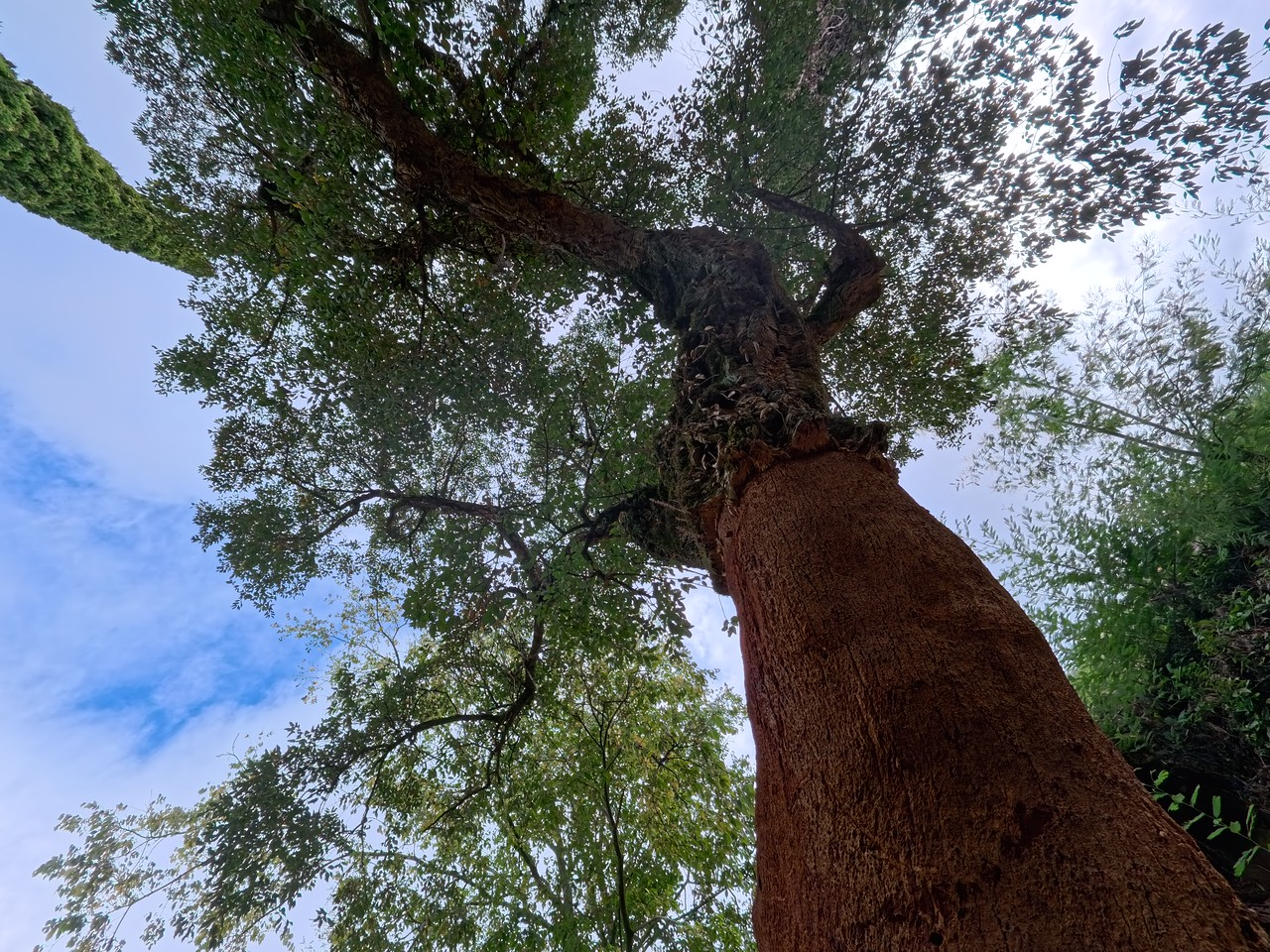
During this stop, Filipe also dropped knowledge about cork trees. Portugal is one of the world's biggest cork exporters, he explained. Cork trees are incredibly valuable, carefully regulated, and represent a significant chunk of Portugal's export economy. You can't just cut down a cork tree in Portugal – they're protected, monitored, and harvested on strict timelines to ensure sustainability.
Monchique Town: Where Lunch Takes an Hour
From the springs, we traveled up into the mountains to reach Monchique town proper. Light rain greeted us when we piled out of the van – another microclimate shift Filipe had predicted. He pointed out a few restaurant options and told us we had an hour and a half for lunch. "Explore, eat, enjoy. Meet back here at two o'clock."
The town had that mountain village charm – narrow streets climbing hillsides, local shops catering to residents more than tourists, restaurants that looked like they'd been serving the same dishes for decades. But we noticed a crowd forming at one of the more international-looking places. Turned out a big bike tour group was rolling through, and they'd had the same idea we did.
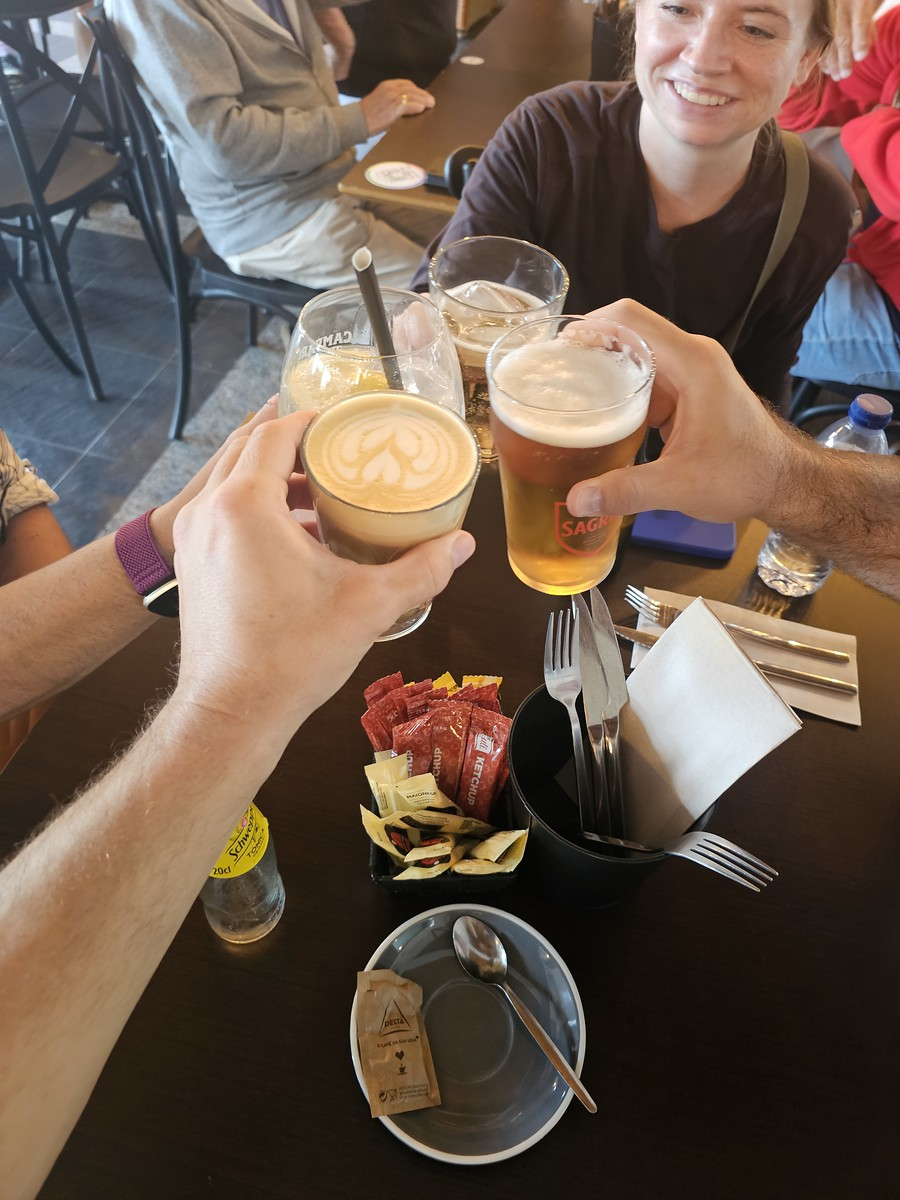
We got in line along with Chris and Olivia from our van. Standing there waiting, we fell into conversation about travel, work, life back home. Olivia shared nursing stories, Chris talked about finance industry stress, and we all agreed that getting out of normal routines was essential for maintaining sanity. Regular people taking regular vacations, but somehow these connections felt meaningful in the moment.
When we finally got seated together, time started ticking faster than expected. The restaurant was slammed. That bike tour group wasn't small, and the kitchen was clearly struggling to keep up. We ordered – I went with a burrito, my sister got something else, fries for the table – and then we waited.
And waited.
Conversation flowed easily enough. Chris and Olivia were good company, sharing their own Portugal travel stories, asking about our coastal hike experience, making the kind of small talk that actually feels substantial when you're all sitting in a Portuguese mountain town watching rain spatter against windows.
But an hour passed and our food still hadn't arrived. I flagged down the waitress and politely asked about our order. That seemed to trigger something in the kitchen because suddenly our plates appeared. We had maybe thirty minutes left before Filipe would be waiting. We scarfed down those fries and that burrito like we were still on the trail trying to maximize daylight hours.
Rushed back to the van where Filipe and the rest of our group were already waiting. Apologies offered, laughs shared, and we were off to the next stop.
The Mountain That Disappeared Into Fog
Filipe had planned to drive us to the highest mountain in the area for panoramic views. But those microclimates he'd been explaining all day? They'd conspired against us. Fog rolled in thick and heavy right where we needed to be. No point driving to a viewpoint when you can't see anything.
Instead, we stopped a bit lower down the mountain where visibility was better. Group photo time. Filipe directed us into position like he'd done this a thousand times before – which he probably had. Those tour group photos always feel a bit forced, but they serve their purpose. Years from now when memories fade, that photo will remind me of this specific day, this specific group of strangers who became friendly acquaintances over wine and Portuguese history lessons.
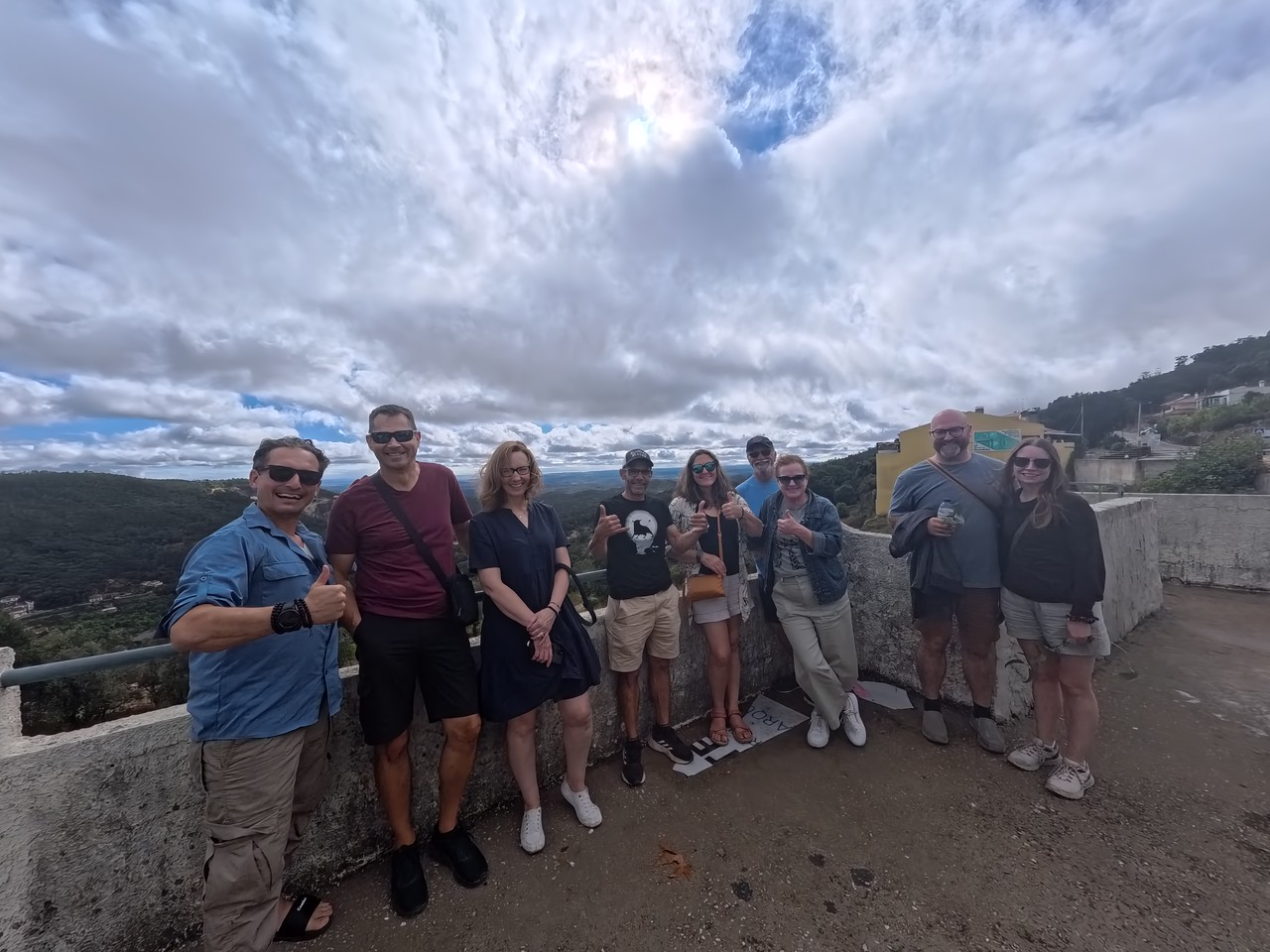
All Portuguese, All the Time
Our next stop was a local shop featuring exclusively Portuguese-made items. An older couple ran the place, and they had that welcoming energy that came from genuinely loving their products rather than just trying to make sales. Everything in the shop was locally sourced or made – no mass-produced tourist trinkets, no cheap imports labeled as authentic.
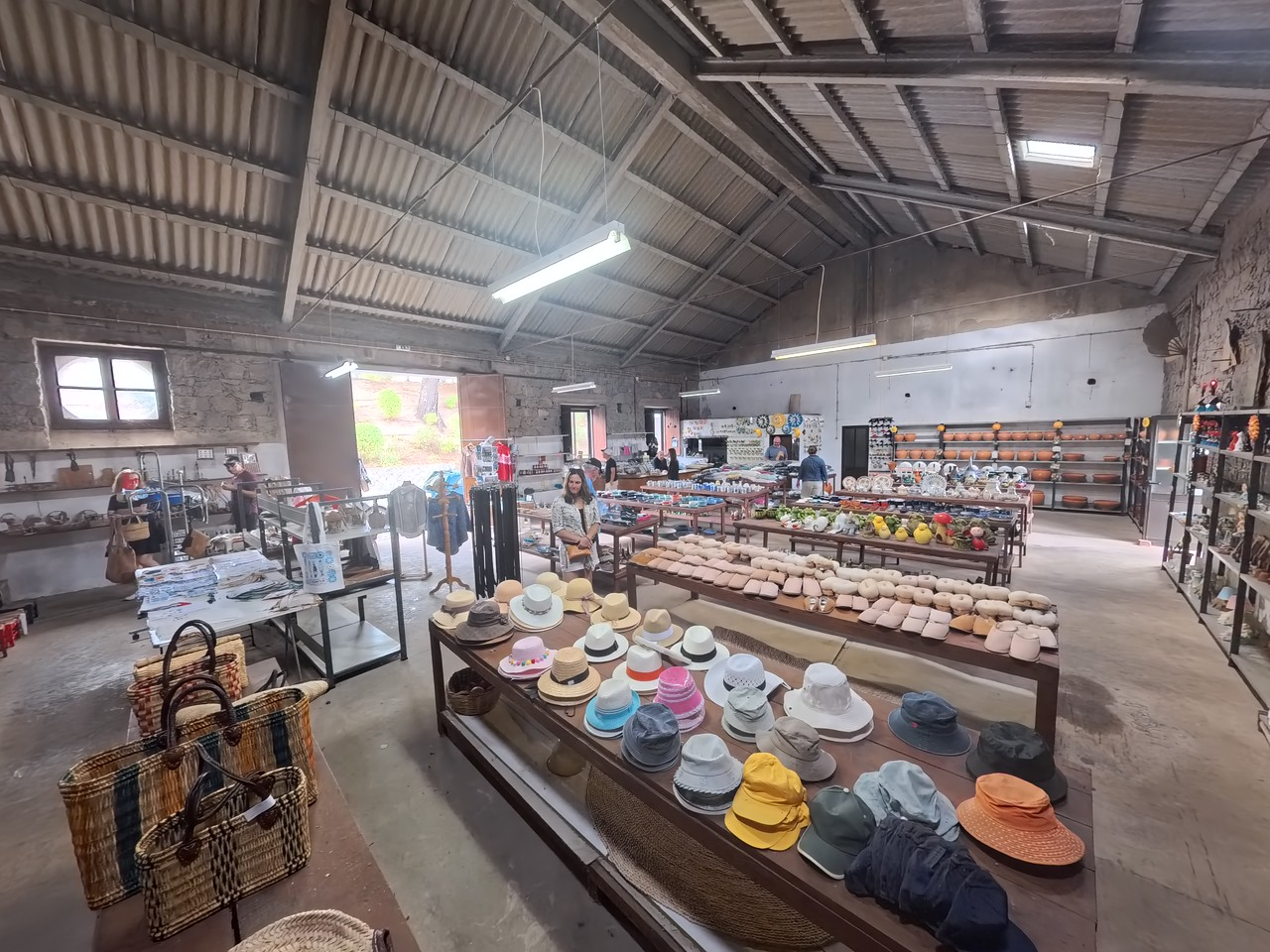
I browsed but didn't buy anything. My sister, however, picked up a traditional Portuguese plate with those little spiky things in the bottom designed for grinding olives and garlic. Practical, culturally authentic, and small enough to fit in her luggage without too much extra weight. Perfect souvenir criteria.
The shop represented something Filipe had been talking about all day – preserving Portuguese culture and craftsmanship in the face of globalization and mass tourism. Every item in that shop told a story, connected to specific artisans, specific traditions, specific regions of Portugal. Support these places or watch them disappear. Simple equation.
Quinta do Francês: The Crazy Doctor's Legacy
Finally, the main event: wine tasting at Quinta do Francês Winery (http://www.quintadofrances.com/). This place had a story, naturally. Started by someone locals called "the crazy doctor" – a nickname that suggested bold choices and risks taken. The vineyard might only be about twelve years old, but the wines they're producing now compete internationally. Portuguese wine is having a moment globally, and places like Quinta do Francês are leading that charge.

We pulled up to a property that looked both rustic and professional. They'd invested in the right infrastructure while maintaining that authentic vineyard aesthetic. Our group piled out of the van one last time – and by now we'd perfected the exit strategy. Everyone knew their role, moved efficiently, no more stumbling over each other like we had at Silves Castle hours earlier.

They set us up for a tasting of three different wines, then surprised us with a bonus fourth. I wish I could remember the specific names and varietals. Honestly, I was tired from the day's adventures and just happy to sit in the afternoon sun, glass in hand, listening to other people's conversations flow around me.
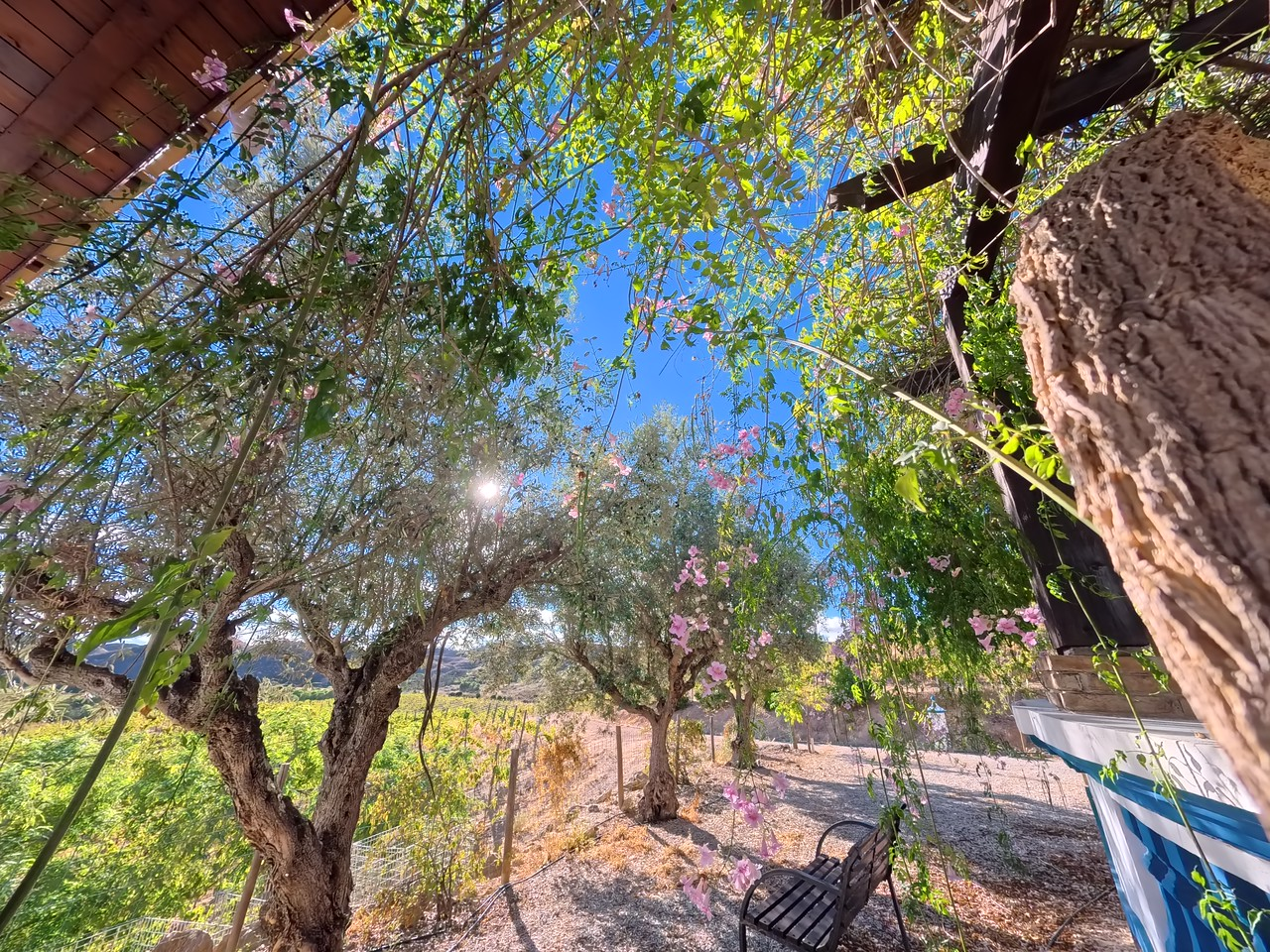
The wines were good. Better than good. They had that distinctive Portuguese character – bold, interesting, not trying to imitate French or Italian wines but standing on their own. The viney